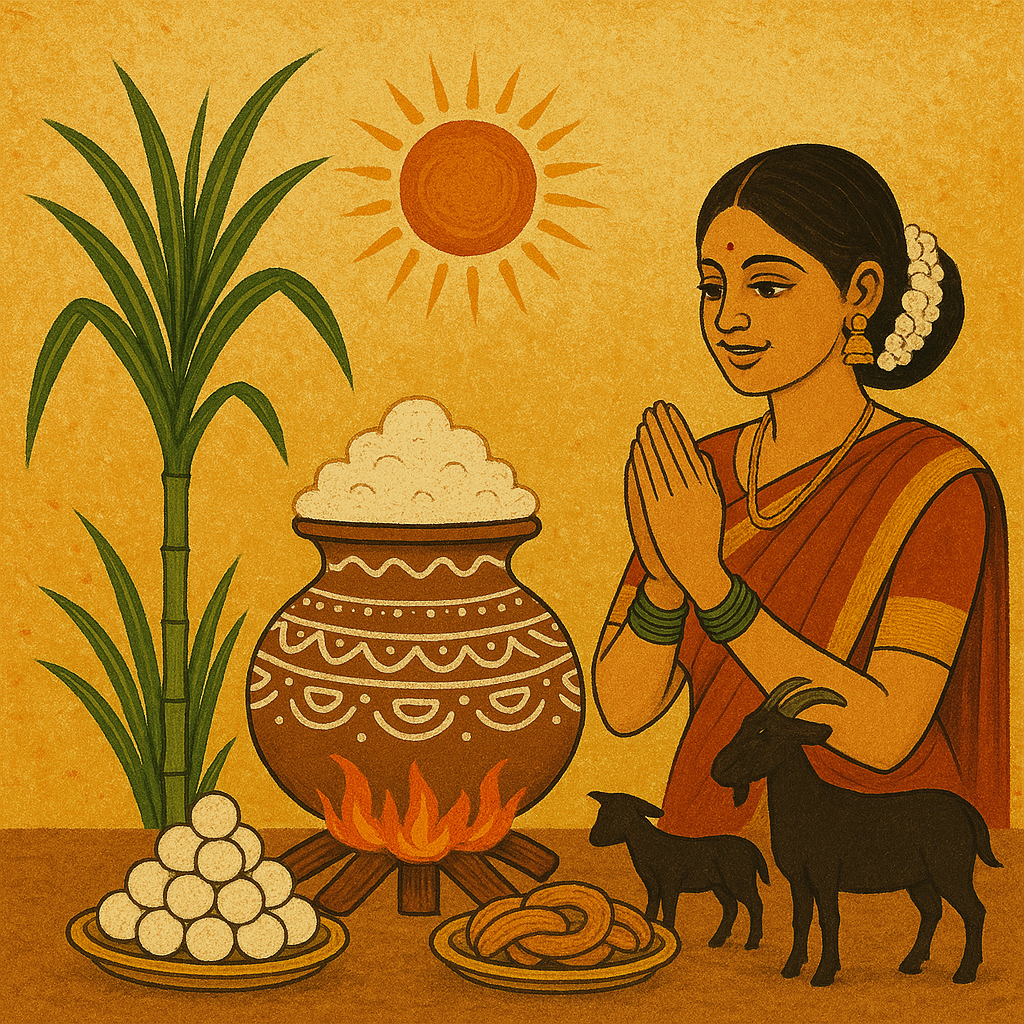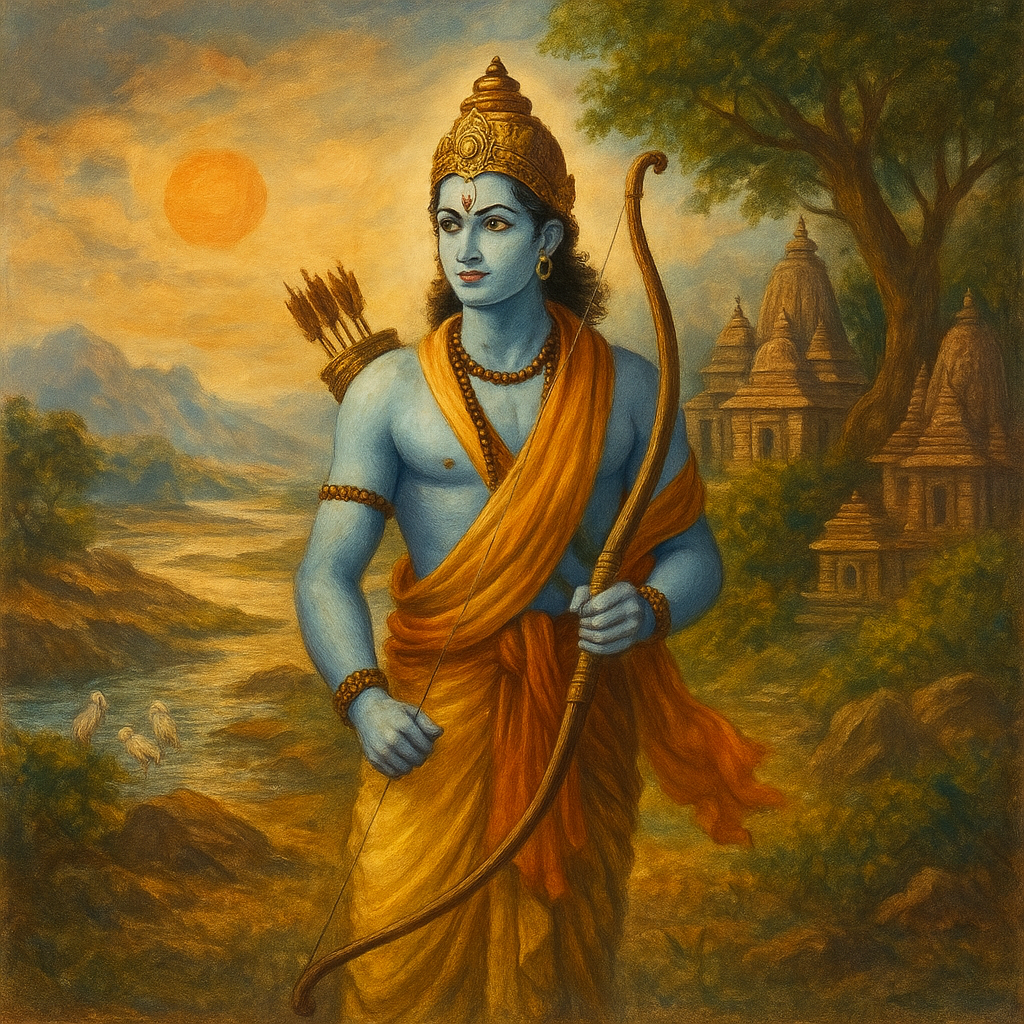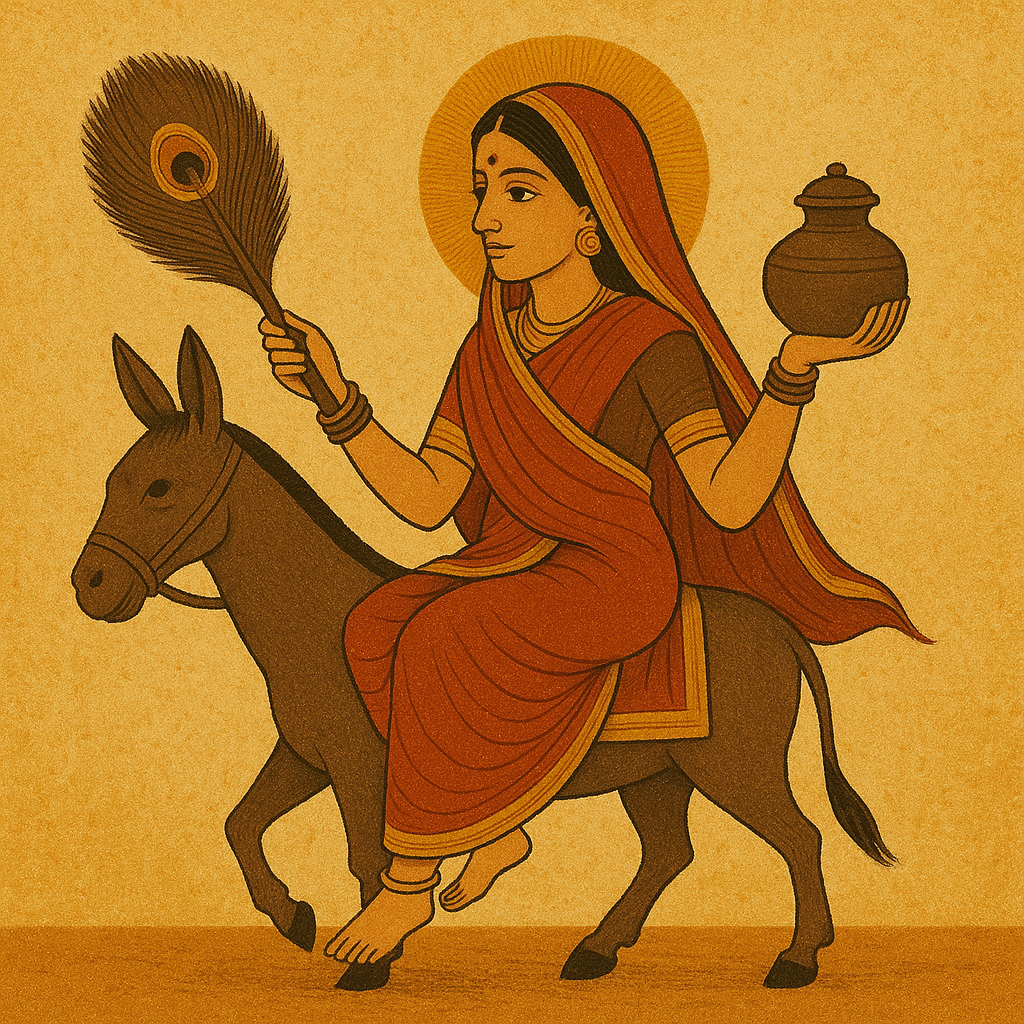Ekadashi is one of the most sacred observances in Hindu tradition, dedicated to Lord Vishnu. The word itself means the eleventh day, and it falls on the 11th lunar day (tithi) of both the waxing (Shukla Paksha) and waning (Krishna Paksha) phases of the moon. Spiritually, Ekadashi represents the mastery of the eleven senses- five organs of perception, five organs of action, and the mind, by turning them away from worldly desires and directing them toward God.
According to the Padma Purana, Ekadashi Devi herself manifested from Lord Vishnu to destroy the demon Mura, and since then, the day has been revered as a vrata (fast) that brings purity, protection, and liberation. Observing Ekadashi is believed to cleanse past sins, grant good health, and open the doors of moksha (spiritual freedom).
There are 24 Ekadashis in a year (and 26 in years with an Adhika month), each carrying its own story, deity association, and spiritual benefits. In 2026, devotees have many opportunities to undertake this sacred vrat and strengthen their bond with Lord Vishnu through fasting, prayers, and puja.
What is Ekadashi?
Ekadashi is the eleventh day of the lunar cycle, observed twice a month, once during the waxing phase (Shukla Paksha) and once during the waning phase (Krishna Paksha). On this day, devotees dedicate themselves to Lord Vishnu through fasting, prayer, and self-control.
The word Ekadashi is not just about a date; it signifies the discipline of mastering the eleven indriyas- the ten senses and the mind. By withdrawing from indulgence and focusing on spiritual practice, the devotee channels energy towards higher consciousness.
According to ancient texts, the vrat began when Ekadashi Devi, a divine energy of Lord Vishnu, appeared and destroyed the demon Mura who threatened the gods. Lord Vishnu blessed her and declared that observing a fast on this day would destroy sins and help devotees attain health, prosperity, and liberation.
Thus, Ekadashi is regarded as a sacred vrata that purifies the body and mind, strengthens devotion, and brings the blessings of Vishnu into one’s life.
Ekadashi 2026 Calendar: Dates & Tithi
|
Ekadashi |
Month |
Date & Day |
Paksha |
Tithi Begins |
Tithi Ends |
|
Shattila Ekadashi |
January |
Jan 14, Wed |
Magha Krishna |
03:17 PM, Jan 13 |
05:52 PM, Jan 14 |
|
Jaya Ekadashi |
January |
Jan 29, Thu |
Magha Shukla |
04:35 PM, Jan 28 |
01:55 PM, Jan 29 |
|
Vijaya Ekadashi |
February |
Feb 13, Fri |
Phalguna Krishna |
12:22 PM, Feb 12 |
02:25 PM, Feb 13 |
|
Amalaki Ekadashi |
February |
Feb 27, Fri |
Phalguna Shukla |
12:33 AM, Feb 27 |
10:32 PM, Feb 27 |
|
Papamochani Ekadashi |
March |
Mar 15, Sun |
Chaitra Krishna |
08:10 AM, Mar 14 |
09:16 AM, Mar 15 |
|
Kamada Ekadashi |
March |
Mar 29, Sun |
Chaitra Shukla |
08:45 AM, Mar 28 |
07:46 AM, Mar 29 |
|
Varuthini Ekadashi |
April |
Apr 13, Mon |
Vaishakha Krishna |
01:16 AM, Apr 13 |
01:08 AM, Apr 14 |
|
Mohini Ekadashi |
April |
Apr 27, Mon |
Vaishakha Shukla |
06:06 PM, Apr 26 |
06:15 PM, Apr 27 |
|
Apara Ekadashi |
May |
May 13, Wed |
Jyeshtha Krishna |
02:52 PM, May 12 |
01:29 PM, May 13 |
|
Padmini Ekadashi |
May |
May 27, Wed |
Jyeshtha Shukla |
05:10 AM, May 26 |
06:21 AM, May 27 |
|
Parama Ekadashi |
June |
Jun 11, Thu |
Jyeshtha Krishna |
12:57 AM, Jun 11 |
10:36 PM, Jun 11 |
|
Nirjala Ekadashi |
June |
Jun 25, Thu |
Jyeshtha Shukla |
06:12 PM, Jun 24 |
08:09 PM, Jun 25 |
|
Yogini Ekadashi |
July |
Jul 10, Fri |
Ashadha Krishna |
08:16 AM, Jul 10 |
05:22 AM, Jul 11 |
|
Devshayani Ekadashi |
July |
Jul 25, Sat |
Ashadha Shukla |
09:12 AM, Jul 24 |
11:34 AM, Jul 25 |
|
Kamika Ekadashi |
August |
Aug 09, Sun |
Shravana Krishna |
01:59 PM, Aug 08 |
11:04 AM, Aug 09 |
|
Shravana Putrada Ekadashi |
August |
Aug 23, Sun |
Shravana Shukla |
02:00 AM, Aug 23 |
04:18 AM, Aug 24 |
|
Aja Ekadashi |
September |
Sep 07, Mon |
Bhadrapada Krishna |
07:29 PM, Sep 06 |
05:03 PM, Sep 07 |
|
Parsva (Parivartini) Ekadashi |
September |
Sep 22, Tue |
Bhadrapada Shukla |
08:00 PM, Sep 21 |
09:43 PM, Sep 22 |
|
Indira Ekadashi |
October |
Oct 06, Tue |
Ashwina Krishna |
02:07 AM, Oct 06 |
12:34 AM, Oct 07 |
|
Papankusha Ekadashi |
October |
Oct 22, Thu |
Ashwina Shukla |
02:11 PM, Oct 21 |
02:47 PM, Oct 22 |
|
Rama Ekadashi |
November |
Nov 05, Thu |
Kartika Krishna |
11:03 AM, Nov 04 |
10:35 AM, Nov 05 |
|
Devutthana (Prabodhini) Ekadashi |
November |
Nov 20, Fri |
Kartika Shukla |
07:15 AM, Nov 20 |
06:31 AM, Nov 21 |
|
Utpanna Ekadashi |
December |
Dec 04, Fri |
Margashirsha Krishna |
11:03 PM, Dec 03 |
11:44 PM, Dec 04 |
|
Mokshada / Vaikuntha Ekadashi |
December |
Dec 20, Sun |
Margashirsha Shukla |
10:09 PM, Dec 19 |
08:14 PM, Dec 20 |
Scriptural and Spiritual Significance of Ekadashi
Ekadashi is not just the eleventh day of the lunar cycle, but a sacred opportunity to cleanse the body, calm the mind, and connect deeply with Lord Vishnu.
The Divine Origin- Ekadashi Devi
As described in the Padma Purana, when the demon Mura began troubling the devas and the world, Lord Vishnu created a radiant energy from Himself. This energy took the form of Ekadashi Devi, who defeated Mura. Pleased with her devotion, Vishnu blessed her and declared that anyone who observes the Ekadashi fast with sincerity will be freed from sins and blessed with health, prosperity, and liberation.
The Power to Remove Sins
Another story tells of Papa Purusha, a being who carried the weight of all sins. When Ekadashi appeared, he had nowhere to hide, showing that this vrat alone has the power to wash away negative karmas. It is said that observing even one Ekadashi sincerely can grant the fruit of many other rituals combined.
Teachings of Lord Krishna
Lord Krishna Himself explained that Ekadashi is dearer to Him than elaborate sacrifices and rituals. He said that fasting on this day goes beyond outer actions and directly purifies the soul.
Spiritual Symbolism
Control of the senses: Ekadashi represents mastery over the eleven indriyas- ten senses and the mind.
Purity: By restraining food and desires, the mind turns inward and grows lighter.
Grace of Vishnu: As the day most loved by Lord Vishnu, Ekadashi invites His protection and blessings.
Liberation: The vrata is believed to open the doors to moksha, freeing the devotee from the cycle of birth and death.
In essence, Ekadashi is a practice of self-discipline and devotion that helps devotees rise above worldly distractions and experience the peace and mercy of Lord Vishnu.
Types of Ekadashi
In a lunar year, there are usually 24 Ekadashis (two every month), and in an Adhika month (leap year of the Hindu calendar), there are 26. Each Ekadashi has its own name, story, and special blessing, often connected with different incarnations of Lord Vishnu. While all are sacred, some hold a very special place in tradition.
Important Ekadashis and Their Significance
Nirjala Ekadashi (Jyeshtha Shukla Paksha):
- The most austere Ekadashi, observed without food or water. It is believed that keeping Nirjala vrat grants the merit of observing all the Ekadashis of the year.
Devshayani (Shayani) Ekadashi (Ashadha Shukla Paksha):
- Marks the day Lord Vishnu goes into cosmic sleep ( Yoga Nidra ) for four months. It begins the holy period of Chaturmas, when many spiritual practices are emphasized.
Vaikuntha Ekadashi (Margashirsha/Pausha Shukla Paksha):
- One of the most important Ekadashis, believed to open the gates of Vaikuntha (the abode of Vishnu). Temples in South India celebrate this day with grand processions.
Mokshada Ekadashi (Margashirsha Shukla Paksha):
- Associated with the teachings of the Bhagavad Gita, which was delivered on this day. Fasting here is said to free ancestors from suffering and grant moksha.
Papankusha Ekadashi (Ashwin Shukla Paksha):
- Known to destroy past sins and ensure progress in both material and spiritual life.
Putrada Ekadashi (Paush and Shravan Shukla Paksha):
- Traditionally observed by couples praying for children and family happiness.
Kamika Ekadashi (Shravana Krishna Paksha):
- Said to grant forgiveness for grave mistakes and bring divine blessings when accompanied with Tulsi and Vishnu worship.
Amalaki Ekadashi (Phalguna Shukla Paksha):
- Honors the Amla tree, seen as a dwelling place of Lord Vishnu. Devotees offer fruits and perform rituals around the tree.
Varuthini Ekadashi (Vaishakha Krishna Paksha):
- A vrat that brings prosperity, removes misfortunes, and blesses devotees with happiness and peace.
Apara Ekadashi (Jyeshtha Krishna Paksha):
- Known for granting fame, recognition, and removal of accumulated sins.
Each Ekadashi carries its own vrat katha (legend) and spiritual fruit. Together, they form a sacred cycle of devotion across the year, allowing devotees to renew their discipline, purify their lives, and grow closer to Lord Vishnu.
Ekadashi Vrat and Puja Vidhi
Observing Ekadashi vrat is considered an offering of the body, mind, and senses to Lord Vishnu. The rituals are simple but filled with devotion, and they can be adapted according to one’s health and ability.
How to Observe the Fast
Morning Preparation: Begin the day with a bath, wear clean clothes, and take a sankalpa (vow) to observe the vrat sincerely.
Types of Fast:
- Nirjala – no food or water for the entire day.
- Sajala – only water or fruit juices.
- Farali – fruits, milk, and light satvik foods like potatoes or sabudana.
- What to Avoid: Grains, rice, pulses, beans, garlic, onion, and any tamasic or non-vegetarian foods.
Puja Vidhi
- Altar Setup: Place an image or idol of Lord Vishnu or Krishna on a clean altar. Light a lamp with ghee or oil.
- Offerings: Present tulsi leaves, sandal paste, flowers, incense, and fruits.
- Chanting: Recite Om Namo Bhagavate Vasudevaya or the Vishnu Sahasranama. Many devotees also read the Bhagavad Gita or Bhagavata Purana chapters on this day.
- Katha & Bhajans: Listen to or recite the story (katha) of the specific Ekadashi being observed. Spend the evening in bhajans, kirtan, or satsang.
- Jagran (Staying Awake): Some devotees stay awake through the night, singing the names of Vishnu and offering prayers until dawn.
Breaking the Fast (Parana)
- The vrat is concluded on the next day, Dwadashi, after sunrise.
- One should first offer food to Lord Vishnu, then feed Brahmins or the needy, and only then break their own fast with simple satvik food.
Whether strict or simple, the essence of Ekadashi vrat lies in devotion, self-control, and remembrance of Lord Vishnu throughout the day.
Ekadashi Vrat Katha
Long ago, during Satya Yuga, a powerful demon named Mura spread terror across the three worlds. He attacked devas, disturbed sages, and disrupted the balance of creation. Unable to withstand his strength, the gods approached Lord Vishnu for protection. Out of compassion for His devotees, Vishnu agreed to fight Mura.
The battle between Vishnu and Mura raged on for one thousand years. Finally, Lord Vishnu decided to rest for a while in a cave near the Himalayas. Seeing this as an opportunity, Mura followed Him into the cave, determined to kill the Lord in His sleep.
Just as Mura raised his sword, a divine maiden of brilliant light emerged from Lord Vishnu’s body. She was fierce, radiant, and armed with celestial weapons. With a thunderous roar, she struck down Mura, killing him instantly.
Lord Vishnu awoke and, seeing the demon slain, asked the maiden who she was. With folded hands, she replied:
'I am born from Your own energy, the power of Your eleven senses. I appeared to protect You while You rested, and to end the tyranny of Mura.'
Hearing this, Lord Vishnu was pleased and granted her a boon. He said:
'From today, you shall be known as Ekadashi, the divine tithi of the eleventh day. Whoever observes fasting and worships Me on this day with sincerity shall be freed from sins, blessed with health and prosperity, and at the end of life, attain My eternal abode.'
From that time onwards, Ekadashi vrat became one of the most sacred practices in Hindu tradition. Every fortnight, devotees observe this vrat as a way to honor Lord Vishnu and Ekadashi Devi, seeking purity of body, mind, and soul.
Benefits of Ekadashi
Ekadashi is called the King of Vrats because it benefits the devotee on every level body, mind, and soul. Observing it with sincerity brings harmony between spiritual growth and daily life. Doing fast on Ekadashi, is the highest form of love and faith towards God and to bring peace and serenity into one’s own life. “Ekadashi Vrat Katha” describes this day equal to taking 1000 times bath in the holy river Ganga and to get rid of all sins accumulated during this lifetime and past life.
Spiritual Benefits
Destroys sins: Scriptures say fasting on Ekadashi wipes away the effects of past misdeeds.
Devotion to Vishnu: It is the vrata most loved by Lord Vishnu, ensuring His grace and protection.
Path to Moksha: Regular observance is believed to open the gates of Vaikuntha, leading the soul closer to liberation.
Emotional and Mental Benefits
Discipline and focus: Controlling food and senses helps sharpen concentration and inner strength.
Calmness of mind: Chanting Vishnu’s names, reading Gita, and bhajans bring peace and joy.
Detachment from cravings: Helps devotees overcome unnecessary desires and live with simplicity.
Physical and Scientific Benefits
Detoxification: Fasting allows the digestive system to rest, helping the body remove toxins.
Boosts energy: Converts stored fat into energy, reducing heaviness and lethargy.
Balances sugar and cholesterol: Helps regulate metabolism and prevents lifestyle diseases.
Strengthens immunity: Supports the body’s natural healing and defence system.
Ekadashi vrat purifies the body, refreshes the mind, and uplifts the soul, making it one of the most complete practices of health and devotion in Hindu tradition.
Rudra Centre’s Sacred Offerings for Ekadashi Vrat
Here are spiritually powerful products and services available to enhance your Ekadashi observance. Each line highlights the essence; you can insert the actual links later:
Vishnu Yantra : A sacred symbol invoking Lord Vishnu’s protection and grace, ideal for strengthening your Ekadashi devotion.
Click on the link to buy Vishnu Yantra.
https://www.rudraksha-ratna.com/buy/vishnu-yantra
10 Mukhi Rudraksha: This powerful bead symbolizes clarity, spiritual strength, and guidance, perfect for deepening your connection with Vishnu during Ekadashi.
Click on the link to buy 10 Mukhi Rudraksha.
https://www.rudraksha-ratna.com/k/10-mukhi-rudraksha
Shaligram Shila: A naturally formed Vishnu emblem, ritually revered as His presence itself; an exquisitely auspicious addition to your Ekadashi altar.
Click on the link to buy Shaligram.
https://www.rudraksha-ratna.com/search-results?query=shaligram
All Ekadashi (Gyaras) Vrat Katha Service: Let our priests narrate the vrat katha devotionally, invoke blessings through prayers, and perform puja on your behalf, especially meaningful if you’re unable to observe in person.
Click on the link to buy All Ekadashi Vrat Katha Service.


-in-Astrology.jpg)






.jpg)




Sulekha Chandra
|October 28, 2024
Enlightening article. Thank you 🙏 so much